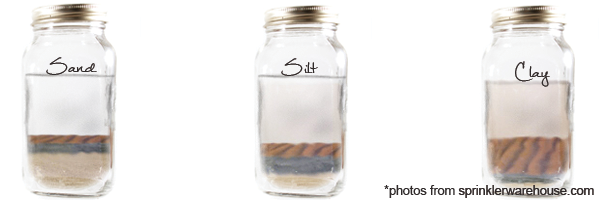A common complaint from pond owners is the clarity of their water. This is a huge question because there are so many different variables that can affect the clarity of your pond water. In today’s blog, we are discussing one possibility, soil type.
There are three basic soil types; namely, sand, silt and clay. Soil can be made up of one of these or a mixture of all three. Most soil is made up of a combination of these soil types. Sand is the largest particle and water will flow through it easily. Silt is a small enough particle to slow water flow, but will not hold water long term. Clay is sticky and creates a leak proof barrier that will completely retain water.
After a quick tutorial on soil types, one would immediately think clay is the best soil type for a pond and we would agree, however, clay is also the soil type that will cause your pond to remain murky. Clay lined ponds are often the ponds that have the biggest issues with pond water clarity. The images below were taken from a lawn and garden website: sprinklerwarehouse.com. Although their test was for a completely different reason the images accurately represent what pond water clarity will look like based on soil type.

While pond owners with heavy sand and silt content might enjoy beautifully clear water with little effort they also struggle with heavy outflow, leaks, and inconsistent water levels. If you have a pond and it has always been murky, the primary soil type is most likely clay, which is great for the overall structure, but is more difficult to turn into a crystal-clear body of water.
For more information on pond water clarity check out our blog post Causes of Murky Pond Water.
